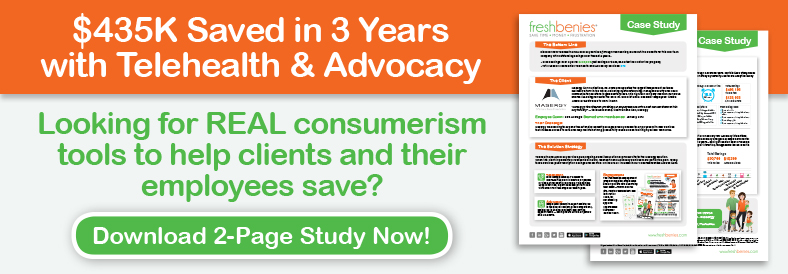LINKEDIN: 4 WAYS I GAVE AND 2 WAYS I RECEIVED
Do you believe the saying, “It’s better to give than receive?” It’s a great thing for a parent to tell a selfish kid. Personally, I like both!
I really enjoyed the book, The Go-Giver. It tells the story of an ambitious man named Joe who’s desperate to land a key sale at the end of a bad quarter. He seeks advice from a legendary consultant who introduces Joe to his network of “go-givers.” Joe learns that changing his focus from getting to giving ultimately leads to unexpected returns. Here’s a great quote: “Most people just laugh when they hear that the secret to success is giving. Then again, most people are nowhere near as successful as they wish they were.” If you haven’t read it, I’d suggest adding it to your list.
What does all that have to do with my topic? Everyone can give, but we can give more when we have assets. Assets aren’t just cash money – they also come in the form of time, a network, connections, experiential advice, mentorship, etc.
I’ve built up a few of these non-monetary assets over my time on earth. But, it’s not enough to POSSESS the assets – you actually have to expend time and focus to use them to help others.
LinkedIn is a fantastic and powerful tool, but most people treat it like an ATM only taking withdrawals.
I’m sharing 4 ways I used LinkedIn to help people and two ways it came back to me. Maybe you’ll get some ideas that’ll help you…
1. Input on a potential hire
I had a Human Resources friend reach out to ask about a potential hire with whom I was connected. I had never worked with the person, so couldn’t offer up extensive feedback. However, I had another LinkedIn connection (and friend) who was the person’s previous manager, so I asked about the potential hire. The feedback was less than stellar and I’m relatively sure my V.P. friend dodged a “bad hire” bullet with the insight provided. Crisis averted.
TIPS: It’s amazing how the LinkedIn network connects us, so look for co-connections when you’re considering a candidate for hire. Also, be willing to give candid feedback when asked (but be sure you’re not violating your company reference policy).
2. Introduce someone to a connection
This one’s a little circuitous, so I’m using fake names to help! My friend (Lucy) reached out because I was connected to someone (Ted) that one of her clients (Joe) wanted to meet. Joe is the CEO of a mid-size company and wanted to offer their services to the Fortune 1000 company where Ted is a C-level executive. I happened to know Ted from my previous career and was connected on LinkedIn. I asked Lucy and Joe exactly what they needed me to say to Ted (and even asked them to write it up). I sent Ted a LinkedIn note letting him know that Joe wanted to meet with him and asked if he had any interest in knowing more about Joe’s company. The answer was something like, “Sure. I don’t think we need Joe’s services right now, but here’s my email address for him to contact me. It’s always good to keep up on what’s going on out there.” Connection made.
TIPS: Be willing to take the time to make connections for others - you never know how it’s going to help them. BUT, we owe it to our connections to be discriminating. People are busy and have “allowed” you to connect with them, so be careful about how you do this and with whom. For instance, I never do an e-introduction until both parties have agreed it’s a good idea. Then, once you determine you’re going to help someone connect, to save yourself time, ask the person wanting the introduction to provide exactly why and what to say (and/or write it for you).
3. Share an event
More and more business professionals are organizing events to get the word out about their goods and services. I recently had a friend who was doing a morning seminar on a subject helpful to most businesses. I also knew my friend would be sharing more about how her company could help other professionals relative to the presentation topic. Because she was a friend AND I knew her company and topic would be of interest to other professionals, I created a post to promote the presentation. As a result, multiple people came out to the event. Promotion works.
TIPS: Don’t share an event unless you: 1) have all the details (you don’t want people asking you for details), 2) know the organizer well and have a good sense that the event will be first-rate (it’s bad P.R. for you if the event is sub-par), or 3) are attending the event (I’ve done it, but prefer to share if I’m going).
4. Refer a job seeker
You know the saying, “It’s not what you know, it’s who you know.” Multiple times a year, I have job-seeking connections ask me to e-introduce them to other connections in companies where they want to be hired. I’m not keeping a tally, but I know there have been many people hired in to companies because of an assisted connection or job performance feedback I gave. Win-win situation.
TIPS: Like point 2 above, you want to be very careful about who you do this for - because it can come back on you. If I don’t know the job seeker’s work ethic or performance, I’ll pass on the resume or give the introduction with that caveat.
I’ve also been the receiver of some pretty cool benefits on LinkedIn BESIDES the satisfaction of being able to help someone make a deal, further their career or find a great job! Here are just two…
1. A new recruit
At freshbenies, we’ve never had to hire an employment recruiting company because of our extensive LinkedIn networks. We create a thorough job description and share it on our company LinkedIn page. Then, all the freshbenies team members share to their networks. Their networks then share it with their networks - this virally circulates our new job out to thousands of professionals. Not only do we get interested candidates, we get built in references from our co-connections.
2. A referral
We all have a few connections that are in the same industry, but we don’t personally know. A new prospect emailed one of our sales team members to learn more about freshbenies. When she asked how the prospect learned about freshbenies, he said someone in the industry told him how great freshbenies is and that he should check it out. Our sales team member didn’t know the referrer, but he follows our company page and has been seeing our posts.
Final words: Yes, these actions can take your time and energy, but I’ve found that it’s worth it to help others. I believe it’s my duty and privilege. In the end, I’m the one who gets the “unexpected returns” because the true secret to success is giving!
Now it’s your turn! In what ways have you used LinkedIn to help others? How has someone helped you? Comment below or send me an email to heidi@freshbenies.com.
















